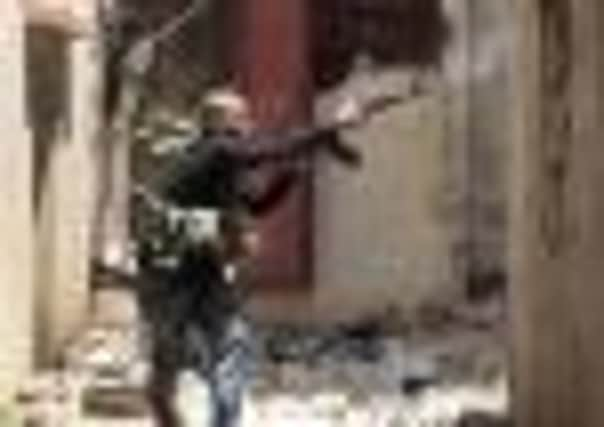Clashes in Lebanon as Syrian uprising spills over border


At least four people have been killed in the city since the gunbattles erupted late on Saturday, and continued yesterday. Lebanon and Syria share a complex web of political and sectarian ties and rivalries, which are easily enflamed.
The revolt in Syria began 14 months ago, and there are fears the unrest could lead to a regional conflagration that could draw in neighbouring countries. The UN estimates the conflict has killed more than 9,000 people since March 2011.
Advertisement
Hide AdAdvertisement
Hide AdSyria is overwhelmingly Sunni, but the country’s president Bashar al-Assad and the ruling elite belong to the minority Alawite sect. The uprising has exacerbated Sunni-Alawite tensions in Lebanon, as well, sparking the violence in Lebanon.
The clashes began this weekend after authorities detained Lebanese national Shadi Mawlawi, an outspoken critic of Mr Assad. Military prosecutor Saqr Saqr yesterday charged Mawlawi and five others, including a Qatari, a Palestinian and a Jordanian, with belonging to an armed group and carrying out armed acts inside and outside Lebanon.
The arrests apparently enraged the Sunni population supporting the uprising, and clashes soon erupted between Sunni fighters and Alawites.
Tripoli’s Bab al-Tabbani district is overwhelmingly Sunni and posters supporting the Syrian opposition hang on walls, as do pictures of a local activist shot by a sniper in similar clashes in February.
The fighters are clear about the root of the conflict. Mustafa Nashar, 35, said: “Syria. It wants it this way. It wants to start a battle here so it can say, ‘Look, even in Lebanon the Sunnis are killing the Alawites’.”
Groups of men, many of them carrying assault rifles, ducked around alleys yesterday. The residents who have remained take cues from fighters about when to sprint across alleys to evade the snipers up the hill.
A car with children crouching in the back sped past one alley, a bullet pinging the pavement right behind it.
The Lebanese army set up a small position a few hundred metres away from the fighting, but there was no sign of soldiers or police in the immediate area.
Advertisement
Hide AdAdvertisement
Hide AdResident fighter Mohammed Jaber, 49, said such local fighting in Tripoli has been going on for decades and that the Syria unrest set them off again.
He said: “The old has become new. Once the Syrian revolution started, we supported all efforts to get rid of the regime.”
Syria’s uprising started in March 2011 with protests calling for political reform, but a relentless government crackdown led many in the opposition to take up arms. Some soldiers have also joined forces with the rebels.
World powers have backed the peace plan for Syria, which was put forward by UN-Arab League envoy Kofi Annan, but the bloodshed has not stopped.
Yesterday, Syrian troops shelled the rebel-held town of Rastan, sparking intense clashes that flooded hospitals and clinics with the injured, activists said.
An amateur video showed a young girl who apparently suffered shrapnel wounds in her thigh undergoing treatment in a makeshift Rastan hospital while screaming in pain. Asked where her mother was, the girl cries: “She died!” Another video showed four dead men, half-covered with a green sheet.
Rami Abdul-Rahman, of the Syrian Observatory for Human Rights, said the rebels destroyed several army vehicles during the clashes and killed 23 soldiers.
Meanwhile, in Damascus, state-run TV said the results of last week’s parliamentary elections will be made public today.
The government praised the vote as a milestone in promised political reforms, but the opposition boycotted the polls they said were designed to strengthen Mr Assad’s grip on power.